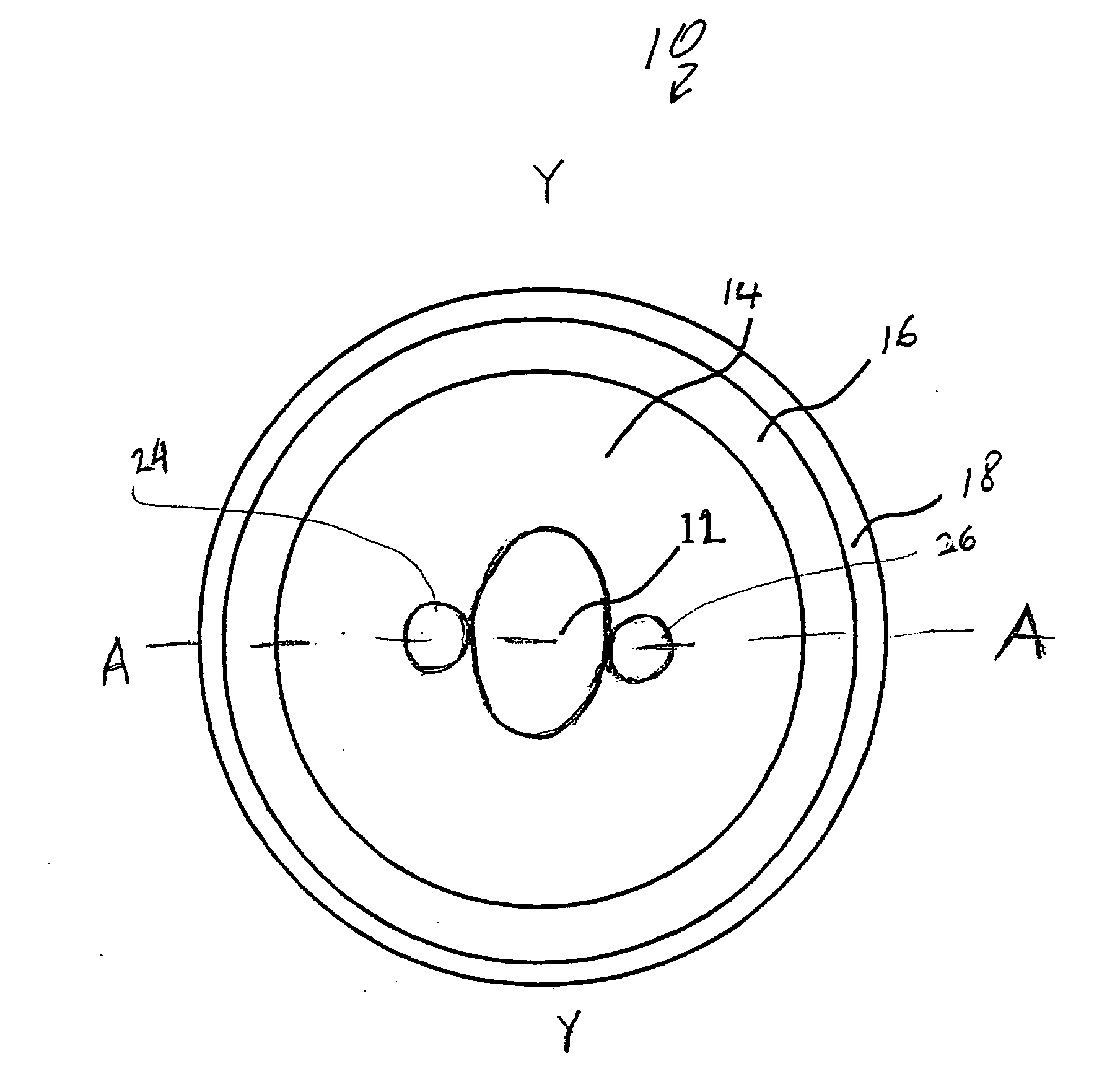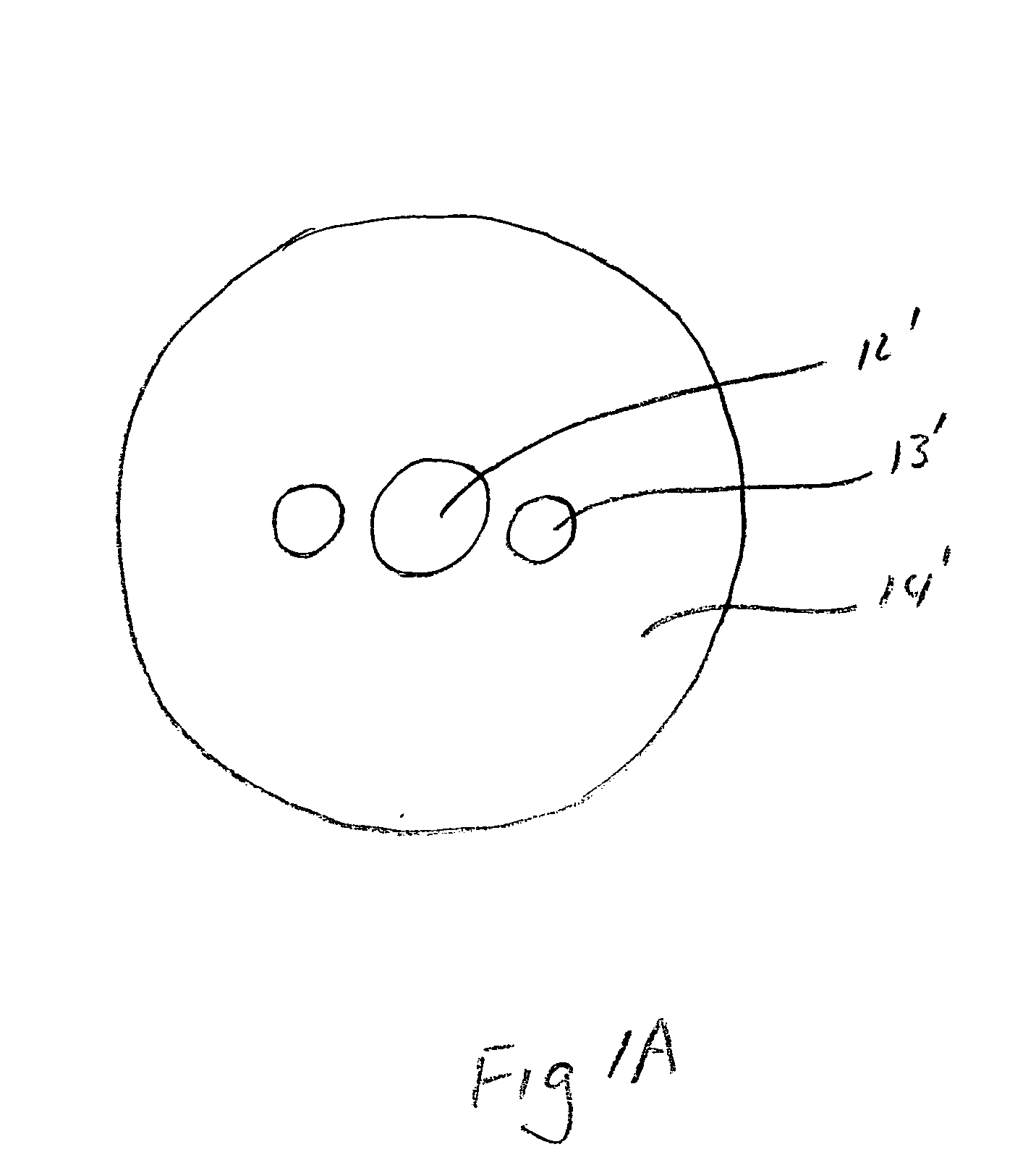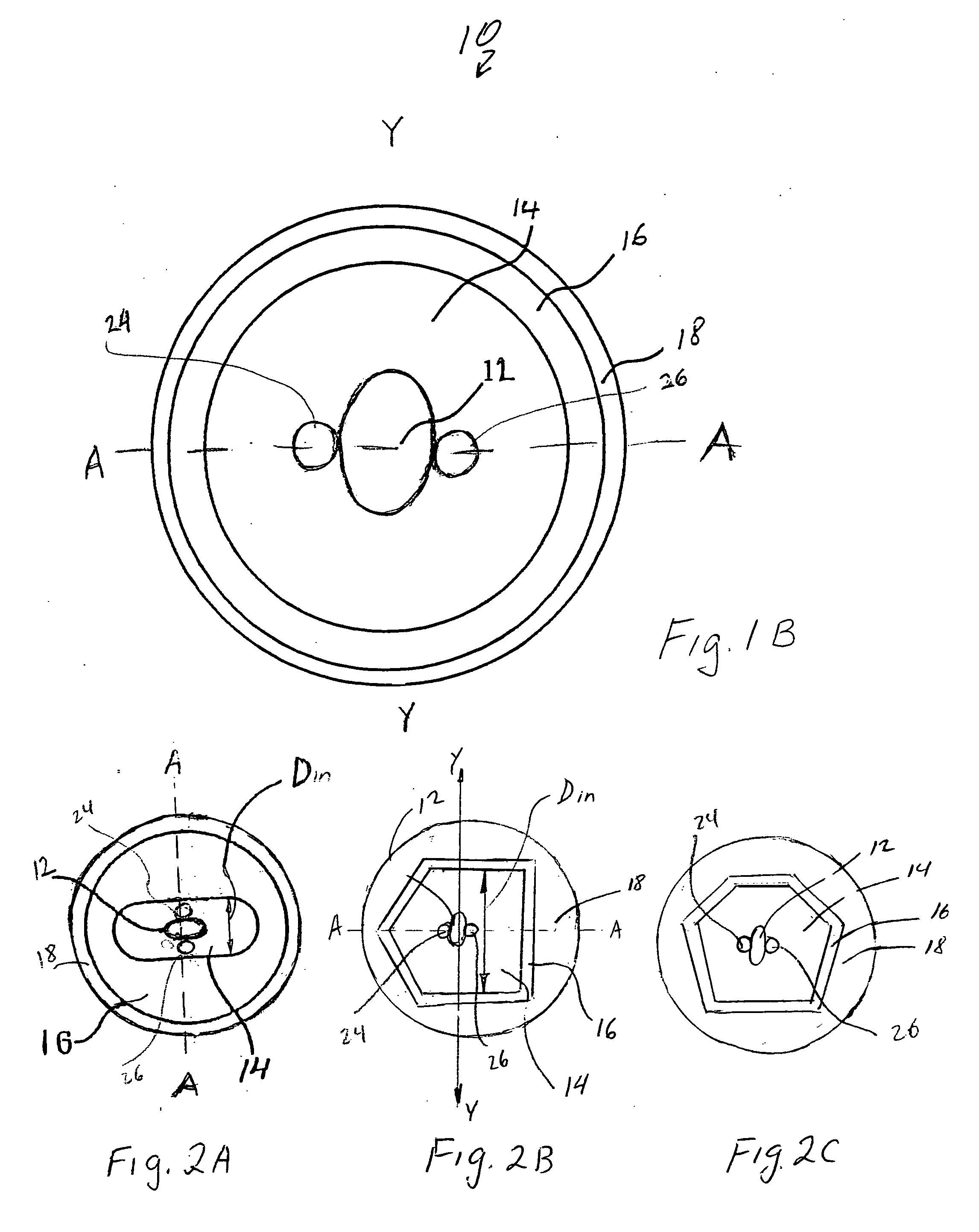Rare earth doped single polarization double clad optical fiber with plurality of air holes
a rare earth doped, optical fiber technology, applied in optical fibers with polarisation, glass deposition burners, instruments, etc., can solve the problems of low capability of handling multi-mode optical sources, low thermal stability of plastics for many applications, and easy moisture damage, etc., to reduce splicing loss, reduce overall fiber length, and reduce work and cost
- Summary
- Abstract
- Description
- Claims
- Application Information
AI Technical Summary
Benefits of technology
Problems solved by technology
Method used
Image
Examples
example 1
[0076]FIGS. 3A and 3B illustrate schematically a relative refractive index profile of a first exemplary optical fiber of the present invention. More specifically, FIGS. 3A and 3B depicts optical fiber's refractive index percent delta (relative to that of the pure silica) vs. the distance measured from the core center. FIG. 3A illustrates schematically a refractive index profile taken across the region that does not contain the air holes, for example, along the line Y-Y of the fiber depicted in FIG. 1B. FIG. 3B illustrates schematically a refractive index profile of the same fiber, but taken across the region that contains the air hole 24 (for example, along the line A-A of the fiber depicted in FIG. 1B).
[0077]FIG. 3C illustrates measured refractive index profile (percent delta, relative to that of the pure silica) of a first exemplary optical fiber of the present invention along the Y-Y axis, measured from the core center. This optical fiber has the cross-section illustrated in FIG...
example 2
[0085]FIG. 6 illustrates a refractive index profile of a second exemplary optical fiber of the present invention, across the region that does not intersect the airholes 24, 26 (along the axis Y-Y, for example). More specifically, FIG. 6 depicts refractive index delta as vs. the radius for the second exemplary optical fiber. This optical fiber has a Yb doped, silica based core 12 which is multi mode at the lasing wavelength of 1100 μm, a silica based inner cladding 14 having two sections of almost the same index of refraction (delta %≈0) and an outer cladding 16 which is doped with fluorine. The NA of the inner cladding is 0.16. FIG. 6 illustrates that the refractive index difference (delta %) of the core 12 is about 0.7, that the fluorine doped outer cladding 16 has the refractive index delta of about −0.7.
[0086] The double clad optical fiber illustrated in FIG. 6 is also suitable for use in a fiber laser device. FIG. 7 corresponds to the optical fiber of FIG. 6. More specifically,...
PUM
| Property | Measurement | Unit |
|---|---|---|
| diameter | aaaaa | aaaaa |
| operating wavelength range | aaaaa | aaaaa |
| output powers | aaaaa | aaaaa |
Abstract
Description
Claims
Application Information
 Login to View More
Login to View More - R&D
- Intellectual Property
- Life Sciences
- Materials
- Tech Scout
- Unparalleled Data Quality
- Higher Quality Content
- 60% Fewer Hallucinations
Browse by: Latest US Patents, China's latest patents, Technical Efficacy Thesaurus, Application Domain, Technology Topic, Popular Technical Reports.
© 2025 PatSnap. All rights reserved.Legal|Privacy policy|Modern Slavery Act Transparency Statement|Sitemap|About US| Contact US: help@patsnap.com



